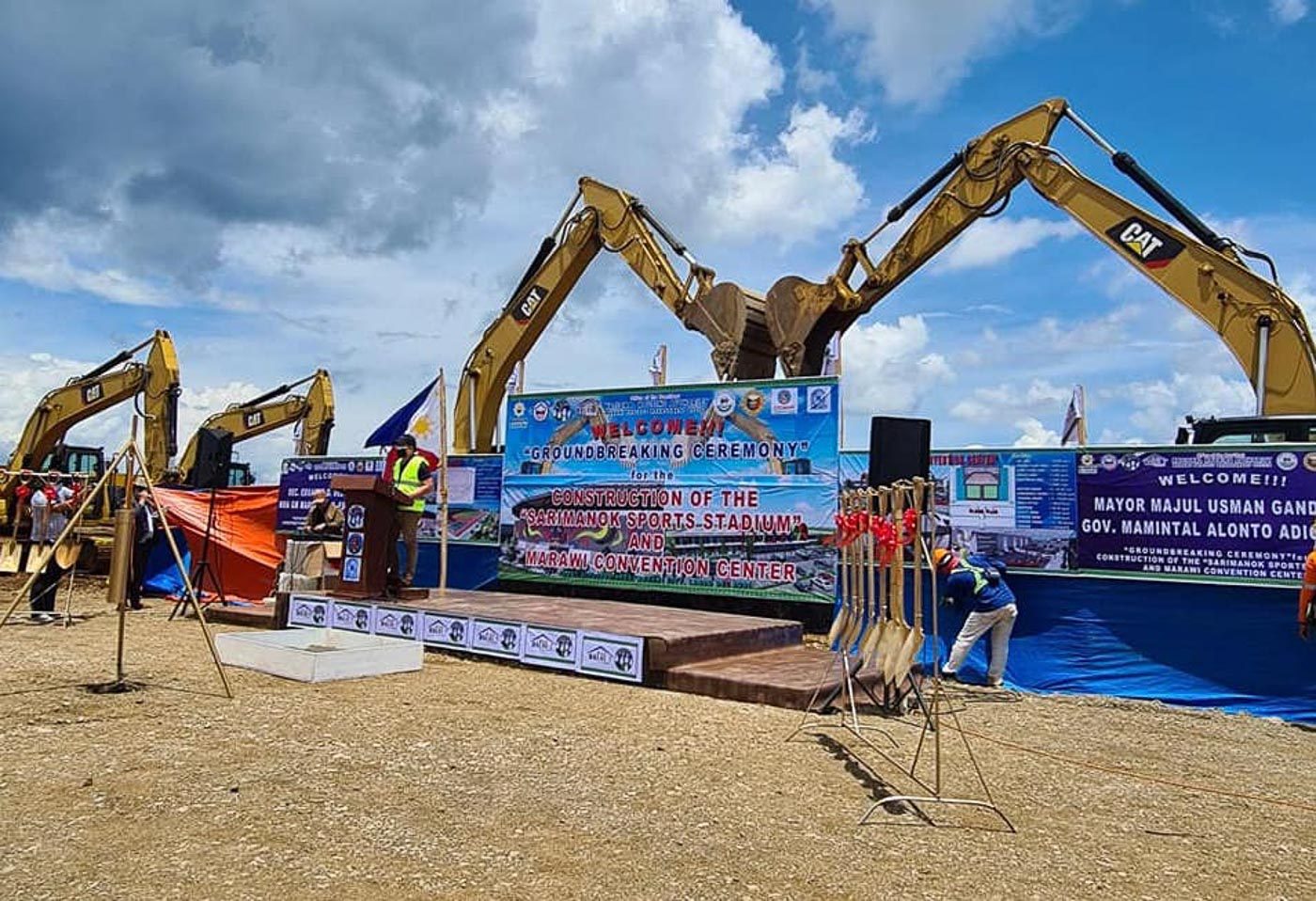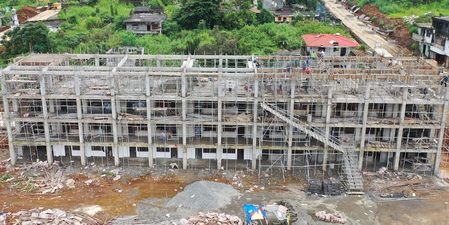SUMMARY
This is AI generated summarization, which may have errors. For context, always refer to the full article.

Maranao civil society leaders have raised howls of protest over the government’s plan to build a stadium and a convention center in Marawi as part of rehabilitation efforts for the city destroyed by bombardment in 2017.
“Why would anyone think of constructing these when thousands are still homeless?” asked Moro Consensus Group (MCG) chairman Drieza Lininding, referring to the projects amounting to nearly P400 million.
The 2017 Marawi siege forced thousands of families to flee the predominantly Muslim city, and found their homes mostly reduced to rubble when they were allowed to return.
The MCG said at least 126,000 people have remained in shelters outside Marawi or “living in misery” elsewhere. Another group called Bakwit Ako said the 2017 Marawi Siege displaced some 60,000 families.
Housing Assistant Secretary Felix Castro said the government held the groundbreaking ceremony for the P199.9-million Sarimanok Sports Stadium project in Barangay Dansalan in May.
Another project, within the part of city that was flattened following the Marawi siiege, is the Marawi Convention Center that would cost the government P180 million.
Questions
The funds for the stadium and convention center could be used instead to build more houses for those who have been homeless since 2017, said Dimapuno Alonto Datu-Ramos Jr., the director of the Bureau of External Relations of the National Commission on Muslim Filipinos (NCMF).
Ramos told Rappler that he was questioning the two projects as a citizen.
“As a taxpayer, I am confused,” Ramos wrote earlier on his Facebook wall. “The good people of Marawi and Lanao need to be enlightened.”
The two projects, costing some P379.9 million, were already awarded by the National Housing Authority (NHA) in 2020, based on a January 21, 2021 bid bulletin signed by NHA Assistant Manager Victor Balba.
Castro as well as those protesting the projects could not say which companies or company bagged the multimillion-peso projects, and neither did the NHA bulletin show that information.
Ramos questioned the NHA’s participation, pointing out that constructing a stadium and a convention center was outside its mandate.
He said that “as a native of Marawi City, I have been wondering why the NHA would build a sports complex and convention center first.”
Part of the bigger picture
Castro, who serves as field office manager of Task Force Bangon Marawi, said the stadium and convention center projects were merely part of a bigger rehabilitation plan.
There are separate housing projects in Marawi, he said.
“Hindi naman puwede puro housing lang (We can’t just do housing),” Castro told Rappler.
Besides, according to Castro, there’s not enough land available for the housing projects.
It would not be the first time for NHA to undertake non-housing projects in Marawi. In 2019, it awarded a P2.2-billion project to demolish damaged structures and clear 250 hectares in the city to Pampanga-based Eddmari Construction and Trading.
The project was bagged in 2018 by a consortium composed of the Batangas-based CJI General Services Incorporated, Green Asia Construction and Development Corporation, and Mamsar Construction and Industrial Corporation, showed a December 28, 2018 certificate on the availability of funds signed by NHA manager for financial management Wilma Hernandez.
Castro said he could not recall the CJI-led consortium. He said what he remembered was that the project was awarded to Finmat International Resources Incorporated (FIRI).
FIRI’s demolition operations were stopped mainly due to issues on demolition and environmental permits, and then NHA subsequently awarded the P2.2-billion project to Eddmari through a negotiated procurement scheme in 2019.
‘A big injustice’
Maranao leaders who questioned the projects had brought the matter to the attention of President Rodrigo Duterte, said Norodin Alonto Lucman, former deputy governor of the now defunct Autonomous Region in Muslim Mindanao (ARMM).
“We discussed this issue in Malacañang with the President. He took note of it, and promised to act on it. Obviously, he didn’t,” Lucman told Rappler.
Ramos also said that Maranaos are not known to be fond of holding conventions, and Marawi is not accessible to non-Maranaos.
Part of Ramos’ Facebook post read, “There is a question about the immediate need for such structures. If you weigh the need for housing, the logic in the decision-making becomes questionable.”
Worse, many families stand to lose their properties in the villages of Datu sa Dansalan, Dansalan, Sabala Amanao, and Datu Naga because of the convention center and other NHA projects, according to Prosecutor Ibrahim Mimbalawag.
Mimbalawag said his family discovered this when they tried to pay real property taxes for their land located in Barangay Datu sa Dansalan, in June.
He said their land ownership title is “genuine and authentic, and not spurious,” yet they were told that they need not pay the taxes anymore because their property is situated within the area where the government would build a convention center, market, and promenade, among others.
Drieza said over a thousand families who fled the four villages would not be able to return and rebuild without compensation because “expropriation proceedings never took place.”
“This is a big injustice,” he said. “The lands are titled. People thought the government was going to help them rebuild their homes. They were given false hopes.” (READ: Marawi residents to rebuild their homes by 2020)
Local government supports projects
Castro, for his part, said the projects were being done with the green light of the Marawi city government.
“These are reclaimed areas, government land. The local government issued certificates of land availability, and then we started building. That is the stand of the local government. We are closely working with the local government. If there are people claiming that they have land titles, I can’t answer that,” Castro said.
The situation in Marawi was a result of the government’s penchant for implementing projects without public consultations, said Marawi civic leader Samira Gutoc, who chairs a group called Bakwit Ako.
“Projects should be a result of people-centered planning. These projects show how the pride and dignity of Marawi’s people were being trampled on,” Gutoc said.
Drieza said Maranaos were practically left in the dark on the rehabilitation planning.
“We’re not even allowed to set foot in our own city. We’re barred from entering, and we can’t see what they’re doing there,” Drieza said.
Gutoc called on the government to prioritize the compensation of thousands of families who lost their homes and other property in 2017, and account for all its actions and projects in Marawi.
A coalition of Maranao organizations, she said, would launch a campaign to make people aware of the real situation in Marawi ahead of Duterte’s sixth State of the Nation Address (SONA) on July 26. – Rappler.com
Add a comment
How does this make you feel?

There are no comments yet. Add your comment to start the conversation.